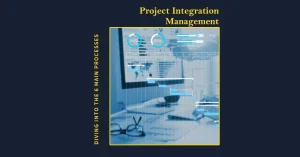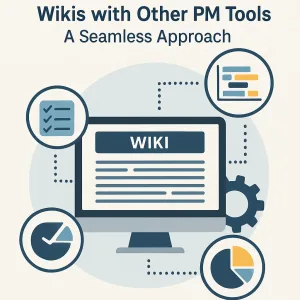Introduction to Bottom-Up Estimating
Bottom-up estimating is a critical technique in project management that involves breaking down a project into its smallest components, such as individual tasks or work packages, to estimate the overall cost and duration. This method allows project managers to assess each element in detail, providing a comprehensive view of the project’s requirements. By aggregating these estimates, project managers can develop a more accurate and reliable overall estimate, which is essential for effective project planning and execution [3][5].
The role of bottom-up estimating in project planning cannot be overstated. It serves as a foundation for budgeting, scheduling, and resource allocation, ensuring that all aspects of the project are considered. This detailed approach is particularly beneficial for complex projects where precision is paramount, as it helps to identify potential risks and resource needs early in the planning process [1][9]. Accurate estimates derived from this method can significantly enhance decision-making and stakeholder confidence, ultimately contributing to the project’s success [7][8].
However, experienced project managers often encounter several challenges when implementing bottom-up estimating. Common pitfalls include:
- Overlooking Task Dependencies: Failing to recognize how tasks interrelate can lead to inaccurate estimates and scheduling conflicts.
- Inadequate Task Definition: Vague or poorly defined tasks can result in miscalculations and an incomplete understanding of project requirements.
- Resource Misallocation: Incorrectly estimating the resources needed for each task can lead to budget overruns and project delays.
Addressing these challenges is crucial for leveraging the full potential of bottom-up estimating. By understanding its foundational principles and recognizing common pitfalls, project managers can implement effective strategies to enhance the accuracy and reliability of their estimates, ultimately leading to more successful project outcomes [10][11].
Common Pitfalls of Bottom-Up Estimating
Bottom-up estimating is a powerful technique in project management that allows for detailed and accurate cost and duration estimates by breaking down projects into smaller components. However, experienced project managers often encounter several challenges when implementing this method. Understanding these pitfalls is crucial for improving the estimation process and ensuring project success. Here are some of the key challenges:
- Overly Granular Estimates Leading to Time Inefficiencies: One of the primary issues with bottom-up estimating is the tendency to create excessively detailed estimates. While granularity can enhance accuracy, it can also lead to time inefficiencies as project managers and teams spend significant amounts of time estimating every minor task. This can detract from the overall project timeline and resource allocation, making it essential to strike a balance between detail and efficiency [2][10].
- Inconsistent Data Collection Methods Across Project Teams: Different teams may employ varying methods for data collection, leading to inconsistencies in estimates. This lack of standardization can result in discrepancies that complicate the aggregation of estimates and hinder effective project planning. Establishing uniform data collection practices across teams is vital to ensure that all estimates are comparable and reliable [4][10].
- Underestimating Risks and Contingencies: A common pitfall in bottom-up estimating is the failure to adequately account for risks and contingencies. Project managers may focus on the granular details of tasks while overlooking potential risks that could impact the project timeline and budget. This oversight can lead to significant issues later in the project, making it crucial to incorporate risk assessment into the estimating process [5][12].
- Lack of Communication and Collaboration Among Team Members: Effective bottom-up estimating relies heavily on collaboration and communication among team members. When there is a lack of interaction, important insights and information may be missed, leading to incomplete or inaccurate estimates. Encouraging open communication and fostering a collaborative environment can help mitigate this challenge and enhance the quality of estimates [3][10].
- Difficulty in Aligning Estimates with Overall Project Goals: Another challenge faced by project managers is ensuring that the detailed estimates generated through bottom-up estimating align with the broader project goals. There can be a disconnect between the granular estimates and the strategic objectives of the project, which can lead to misalignment in resource allocation and project direction. Regularly reviewing and adjusting estimates in the context of overall project goals is essential for maintaining alignment and ensuring project success [6][10].
By recognizing these common pitfalls, project managers can implement strategies to address them effectively. This proactive approach not only enhances the accuracy of estimates but also contributes to the overall success of the project.
Practical Solutions for Effective Bottom-Up Estimating
Bottom-up estimating is a powerful technique in project management that can lead to highly accurate project cost and duration estimates. However, it is not without its challenges. Experienced project managers often encounter pitfalls that can hinder the effectiveness of this approach. Here are some actionable strategies to enhance the bottom-up estimating process:
- Implementing Standardized Estimating Templates and Tools: Utilizing standardized templates and tools can streamline the estimating process. These resources help ensure consistency across projects and provide a clear framework for team members to follow. By having a common structure, project managers can reduce variability in estimates and improve accuracy, making it easier to compare and analyze different projects [1][12].
- Encouraging Collaboration and Open Communication Among Teams: Effective bottom-up estimating relies heavily on input from various team members. Encouraging collaboration fosters an environment where team members feel comfortable sharing insights and concerns. Open communication can lead to a more comprehensive understanding of project tasks and requirements, ultimately resulting in more accurate estimates. Regular team meetings and brainstorming sessions can facilitate this collaborative atmosphere [2][5].
- Regularly Reviewing and Updating Estimation Methods Based on Past Project Performances: Continuous improvement is key to effective project management. By regularly reviewing past project performances and the accuracy of previous estimates, project managers can identify trends and areas for improvement. This practice allows teams to refine their estimating methods over time, adapting to new challenges and enhancing overall accuracy [3][10].
- Utilizing Historical Data and Lessons Learned to Inform Estimates: Historical data from previous projects can serve as a valuable resource for making informed estimates. By analyzing past project outcomes, managers can identify patterns and benchmarks that can guide current estimates. Incorporating lessons learned from previous projects helps avoid repeating mistakes and enhances the reliability of future estimates [4][11].
- Incorporating Risk Assessment as a Part of the Estimating Process: Risk assessment should be an integral part of the bottom-up estimating process. By identifying potential risks and their impacts on project timelines and costs, project managers can create more realistic estimates. This proactive approach allows teams to account for uncertainties and develop contingency plans, ultimately leading to more robust project planning [6][9].
By implementing these strategies, experienced project managers can navigate the challenges of bottom-up estimating more effectively, leading to improved project outcomes and greater overall success.
Strategies for Enhancing Team Engagement in Estimation
When employing bottom-up estimating techniques, the involvement of the entire team is crucial for accurate and reliable estimates. Engaging team members not only enhances the quality of the estimates but also fosters a sense of ownership and accountability. Here are several strategies to enhance team engagement during the estimation process:
- Fostering a Culture of Accountability: Establishing a culture where team members feel responsible for their estimates is essential. When individuals understand that their input directly impacts project outcomes, they are more likely to invest time and effort into providing accurate estimates. This can be achieved by recognizing and rewarding contributions, thereby reinforcing the importance of each member’s role in the estimation process [12][13].
- Utilizing Workshops and Brainstorming Sessions: Organizing workshops and brainstorming sessions can significantly enhance team engagement. These collaborative environments allow team members to share insights and perspectives, leading to a more comprehensive understanding of project requirements. By encouraging open dialogue, project managers can tap into the collective intelligence of the team, which can result in more accurate and innovative estimates [3][11].
- Implementing Agile Methodologies: Agile methodologies promote iterative processes, which can be particularly beneficial for bottom-up estimating. By allowing teams to revisit and adjust estimates throughout the project lifecycle, managers can ensure that estimates remain relevant and accurate as project dynamics evolve. This flexibility not only improves the accuracy of estimates but also keeps team members engaged as they see their input being valued and utilized in real-time [7][10].
- Creating a Feedback Loop: Establishing a feedback loop is vital for refining estimates and enhancing team engagement. Regular discussions where team members can review and critique estimates foster an environment of continuous improvement. This practice not only helps in identifying potential issues early on but also encourages team members to take ownership of their estimates, knowing that their contributions will be discussed and refined collaboratively [11][12].
By implementing these strategies, project managers can significantly enhance team engagement in the estimation process. This not only leads to more accurate estimates but also cultivates a motivated and accountable team, ultimately contributing to the success of the project.
Leveraging Technology for Improved Estimation Accuracy
Bottom-up estimating is a powerful technique that allows for detailed and accurate forecasting of project costs and timelines. However, the process can be fraught with challenges, particularly when it comes to data accuracy and resource allocation. Fortunately, advancements in technology are providing project managers with innovative tools and strategies to enhance the bottom-up estimating process. Here’s how technology can be leveraged to improve estimation accuracy:
Overview of Software Tools that Facilitate Bottom-Up Estimating
A variety of software tools are available that specifically cater to the needs of project managers engaged in bottom-up estimating. These tools allow for the breakdown of projects into smaller, manageable components, enabling detailed analysis of each task. Some popular software options include:
- Microsoft Project: Offers comprehensive project planning features, including task breakdown and resource allocation.
- Primavera P6: Known for its robust scheduling capabilities, it allows for detailed cost and resource management.
- Smartsheet: Provides a user-friendly interface for collaboration and tracking project components, making it easier to estimate costs and durations accurately.
These tools not only streamline the estimation process but also enhance collaboration among team members, ensuring that all aspects of the project are considered.
Benefits of Using Project Management Software with Integrated Estimating Features
Utilizing project management software with integrated estimating features can significantly improve the accuracy of bottom-up estimates. Key benefits include:
- Centralized Data Management: These tools consolidate all project-related data in one place, reducing the risk of errors associated with manual data entry and ensuring that all team members have access to the same information.
- Real-Time Updates: Project management software allows for real-time updates, enabling project managers to adjust estimates as new information becomes available or as project scopes change.
- Enhanced Collaboration: With integrated communication features, team members can easily share insights and updates, leading to more accurate estimates based on collective expertise.
The Role of Artificial Intelligence and Machine Learning in Enhancing Estimation Accuracy
Artificial intelligence (AI) and machine learning (ML) are revolutionizing the way project managers approach bottom-up estimating. These technologies can analyze historical project data to identify patterns and trends, which can inform more accurate future estimates. Key contributions include:
- Predictive Analytics: AI algorithms can predict potential risks and cost overruns by analyzing past project performance, allowing managers to make informed decisions during the estimating process.
- Automated Data Analysis: Machine learning can automate the analysis of large datasets, identifying anomalies and providing insights that may not be immediately apparent to human estimators.
- Continuous Learning: As more projects are completed, AI systems can learn from new data, continuously improving the accuracy of estimates over time.
Examples of Successful Technology Implementations in Bottom-Up Estimating
Several organizations have successfully implemented technology to enhance their bottom-up estimating processes. For instance:
- Construction Firms: Many construction companies have adopted specialized estimating software that integrates with their project management systems, allowing for precise cost tracking and resource allocation. This has led to improved project delivery times and reduced budget overruns.
- IT Projects: In the IT sector, companies are utilizing AI-driven tools to analyze past project data, leading to more accurate estimates for software development timelines and costs. This has resulted in better alignment of resources and improved stakeholder satisfaction.
By embracing technology, project managers can navigate the challenges of bottom-up estimating more effectively, leading to improved accuracy and project success. The integration of software tools, AI, and machine learning not only streamlines the estimating process but also empowers teams to make data-driven decisions that enhance overall project outcomes.
Conclusion: Moving Towards Better Estimation Practices
The accuracy of cost and duration estimates is paramount for the success of any project. Bottom-up estimating, while a powerful technique, is not without its challenges. Addressing the common pitfalls associated with this method is crucial for project managers aiming to enhance their estimation practices.
- Recap of Common Pitfalls: The complexity of bottom-up estimating often arises from the involvement of multiple departments, each with distinct objectives and financial needs, which can lead to convoluted budgeting processes. Additionally, the time-consuming nature of this approach can deter teams from fully engaging in the detailed breakdown necessary for accurate estimates. Recognizing these challenges is the first step towards mitigating their impact on project outcomes [11][14].
- Adopting Solutions and Strategies: Project managers are encouraged to implement the suggested solutions to overcome these pitfalls. This includes leveraging historical data for more accurate estimates, consulting with experts to gain insights, and fostering a collaborative environment where all departments can contribute effectively. By embracing these strategies, teams can streamline the estimating process and improve overall project accuracy [7][10][12].
- Value of Continuous Learning: Finally, the landscape of project management is ever-evolving, and the importance of continuous learning and adaptation cannot be overstated. Project managers should remain open to new methodologies and tools that can enhance their estimating practices. Engaging in professional development opportunities, sharing experiences with peers, and staying updated on industry trends will empower project managers to refine their skills and adapt to the complexities of future projects [3][4][13].
In conclusion, by addressing the common pitfalls of bottom-up estimating and adopting effective strategies, project managers can significantly improve their estimation practices. This commitment to ongoing improvement not only enhances project outcomes but also contributes to the overall success and sustainability of their organizations.
Find out more about Shaun Stoltz https://www.shaunstoltz.com/about/.
This post was written by an AI and reviewed/edited by a human.



